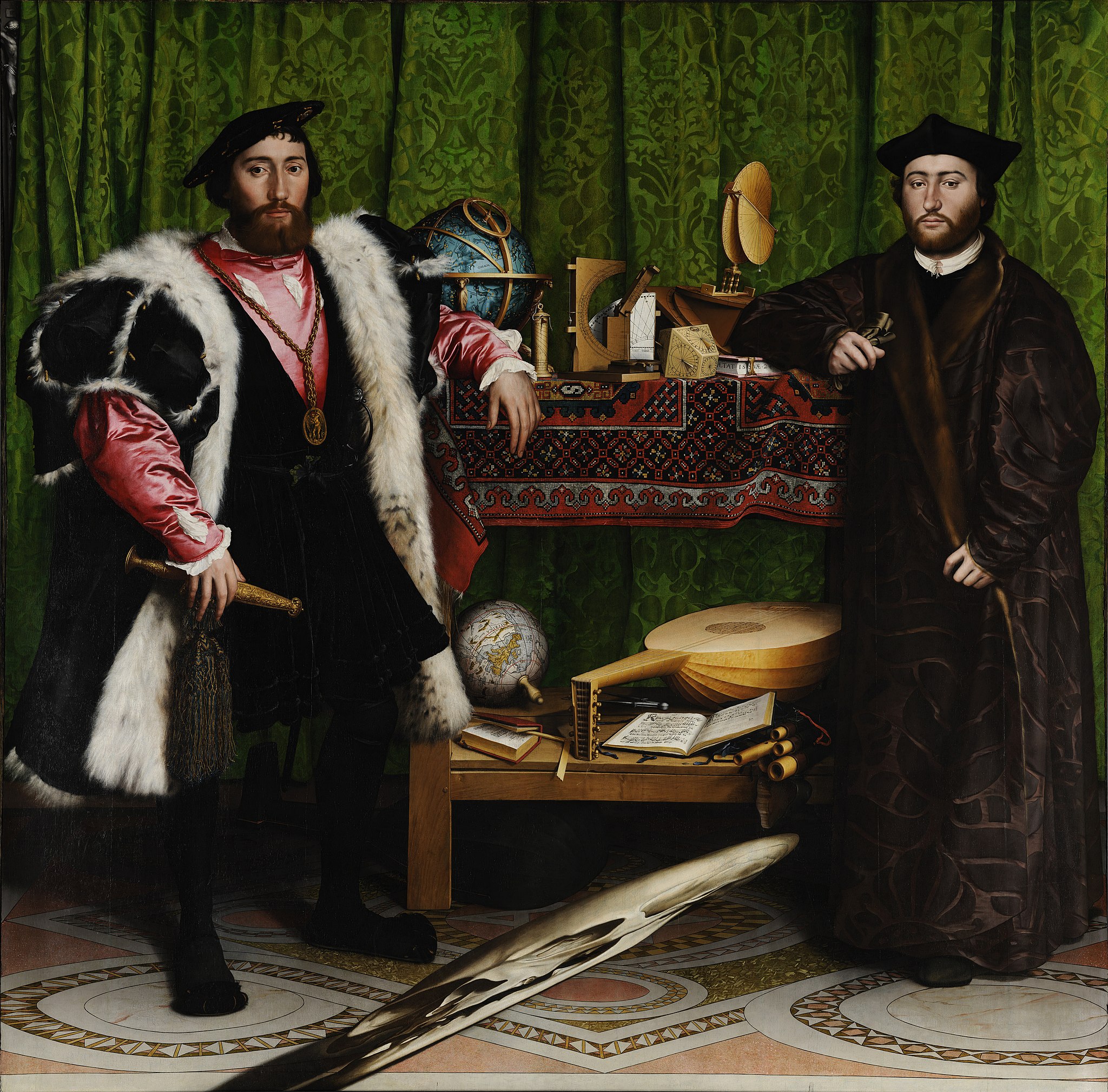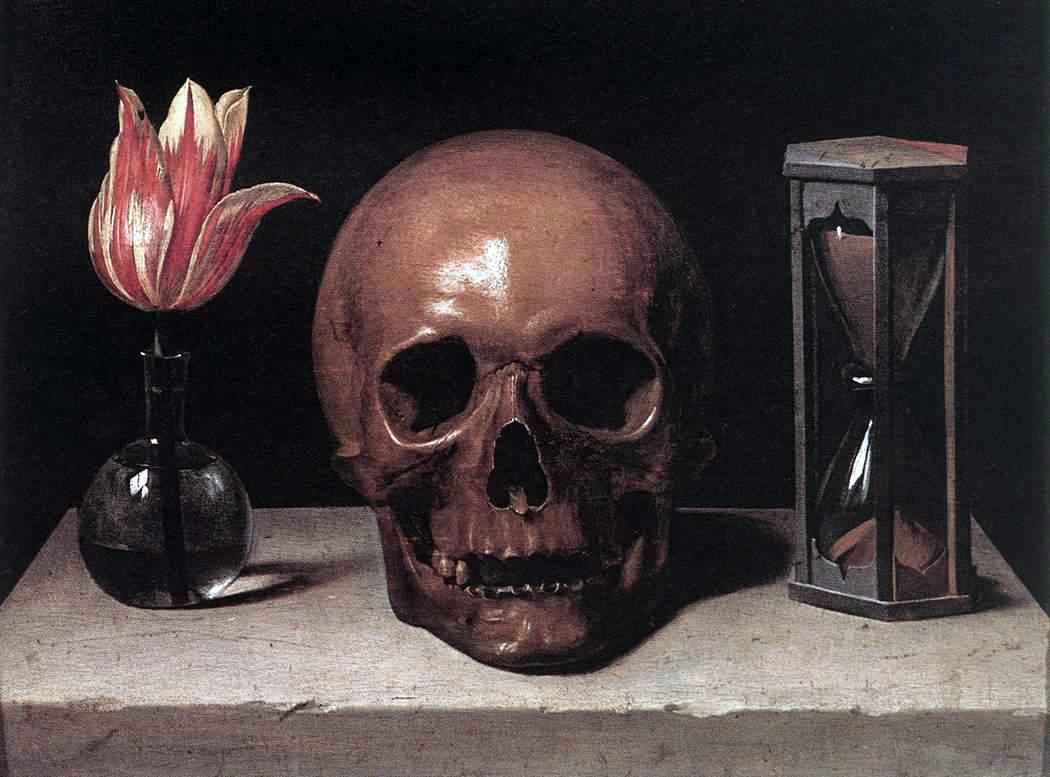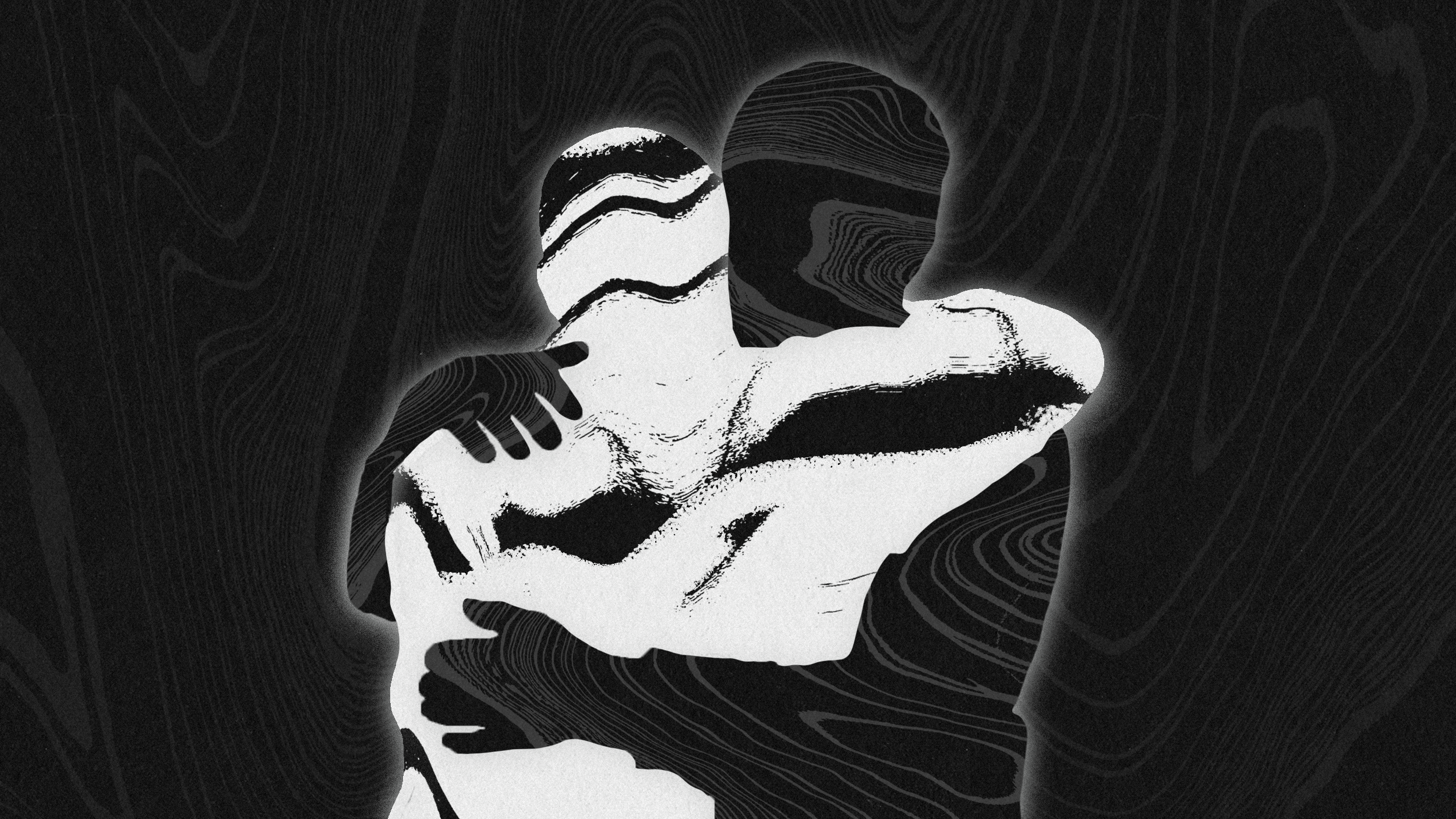Memento mori: Why thinking about death enriches your life

- The only certainty in life is death (even taxes enjoy some wiggle room).
- While we often ignore this fact, contemplating our fate can help show us how to live a fuller life.
- According to Wellman, we need to get back in touch with the things that bring meaning and vitality to our lives.
Hans Holbein the Younger’s 1533 portrait The Ambassadors displays a glaring flaw. Beneath its two subjects and their collection of worldly goods lies a gray blotch splayed across the canvas. A cursory glance may suggest it an odd misstep for an otherwise accomplished painter. But look at that blotch from another angle, specifically the bottom right, and it transformers into a human skull.
This type of optical illusion is known as anamorphosis, and Holbein used it to hide his artistic theme in plain sight. That theme being memento mori, from the Latin meaning “remember you must die.”
For centuries, artists have incorporated symbols such as skulls, hourglasses, and extinguished candles in their works to evoke memento mori — reminding art lovers and critics (mostly the critics) of their inevitable demise. In The Ambassadors, Holbein’s message is clear: No amount of worldly success can remove the stain of death from our lives.
While few of us want such a stark tribute to death hanging on our walls, we may all want more memento mori in our lives. That’s the argument Jodi Wellman, executive coach and assistant instructor at the University of Pennsylvania, makes in her new book, You Only Die Once.
According to Wellman, by considering death from a different angle, we see that it isn’t a stain on our existence. It’s a reminder to live our lives to the fullest. Big Think recently spoke with Wellman to find out why that is and how we can manage that existential feat.
Big Think: You specialize in positive psychology, emphasis on the positive. Yet you wrote a book that’s all about death. Can you square that circle for us?
Wellman: Let me tell you a bit about positive psychology 2.0 — some call it the “dark side.” It is this appreciation that a life well-lived can’t be well-lived if it’s all sunshine and rainbows. It is through some dark days that, in contrast, life satisfaction appears to be better. Positive psychology is about that duality, and the ultimate hardship is that we’re temporary.
I talk about death so that we can talk about life. It’s a means to an end, not the end. That brings an awareness that breathes more life into the lives we get to be living now.
Big Think: How does memento mori help us do that?
Wellman: This is rooted in the science known as “temporal scarcity.” It’s the idea that when an asset is temporary or rare — whether it’s a diamond, a pumpkin-spiced latte, or anything “available for a limited time only” — our perception of its value spikes. It’s the same for life. When we’re reminded that our time is scarce, we take it seriously.
Admittedly, as a positive psychology practitioner, I am toeing the line by talking about scarcity. Most people prefer to talk about abundance, but the truth is that we are wired to want to avoid pain more than pursue pleasure. I hate that fact about us, but if that’s the thing that’s going to help us live, then I will remind us all day long that we’re dying and to value how precious this time is. We need the deadline reminder.

Every Monday counts
Big Think: You mentioned temporal scarcity. Another key phrase in your book is “mortality salience.” What is it, and how does that complicate the picture we’ve discussed so far?
Wellman: Little reminders [that we will die] happen all around us. It could be as simple as watching a movie where a character dies or seeing a funeral procession drive by. When we get these reminders, it does one of two things.
If the reminder is abstract, it tends to elicit a little part of what terror management theory is about. Our brains try to protect us by making us feel good about our, hopefully enduring, life. We double-down on our worldviews. We do things that boost our self-esteem and make us feel important. This is not necessarily a bad thing, but sometimes it can lead to bad behaviors. [For instance], we cling to our beliefs and [attack] beliefs that compromise the integrity of our own.
More concrete death reminders — like the exercises I do in the book — can be more helpful. It needs to be a real reflection where you think about how much time you have left, what that means to you, how grateful you are for what you’ve already done, and what you want to do.
Big Think: How do we make those reminders concrete? It doesn’t require us to walk through a graveyard quoting melancholic poetry, does it?
Wellman: I’m a fan of counting our Mondays. It’s an exercise that can become an important ritual every week and is a simple way to [make your reflections concrete].
You don’t have to just count Mondays. You can count summers, too. A lot of people I know will only take one big trip every five years. If you do the math, you may find you have, say, ten more overseas trips, but a list of 80 countries you want to visit. Now you have to prioritize.
One of the best ways is to have conversations with your friends and family. You don’t need to dwell on the morbid. Take a light touch. Start off by discussing your bucket lists. What do you want to do before you die? Then put some dates on it because a bucket list without dates is just asking to be buried with your hopes and dreams.
Bringing it into your social world can feel a bit weird, but let’s start socializing [around death] so that we can take our time more seriously together.

Don’t live to regret your regrets
Big Think: What do we need to understand about deathbed regrets?
Wellman: One thing is that we can categorize regrets. Some regrets belong in the category of commission. So, the stupid stuff we did and wish we hadn’t. Then there are regrets of omission, meaning the things that we longed to do but didn’t take action on.
The good news is that research shows we tend to rationalize the mistakes we’ve made over time. They will not apparently haunt us on our deathbeds.
A bucket list without dates is just asking to be buried with your hopes and dreams.
It’s the [regrets of omission] that hypothetically eat at us until the very end. They represent versions of our ideal selves that we could be living. What if I had taken that job in San Francisco? What if I asked her out? What if I did all the things that I should have done? In the book, I call these the “coulda, shoulda, woulda’s.”
I’m less concerned about [deathbed] regrets because 15 minutes later we’ll be dead. We probably won’t judge ourselves too much after that. I’m more concerned about using that to ask, “What about the life I’m living now? How do I live a life that won’t lead to a bunch of coulda, shoulda, woulda’s?”
In living color
Big Think: What should our readers understand about hedonic and eudaimonic happiness when it comes to living a good life?
Wellman: The idea of living with vitality aligns with that hedonic side of well-being. It’s the traditional kind of “yay!” version of happiness, and it is a necessary ingredient for a good life. It’s then counterbalanced with living with deeper meaning, and that aligns with the eudaimonic dimension of well-being. It’s more about virtues and good character, purpose and connecting with others.
A nice little cheat sheet for differentiating them is “feeling good versus doing good.”
Intuitively, when someone says vitality, we get that feeling inside. Oh, I need more of that. Similarly, when someone says meaning, we get that same feeling. Oh I need more of that.
Big Think: Many people view it in terms of hedonic versus eudaimonic well-being. You can either be fed grapes while enjoying a frond fanning or you can be the ascetic seeking enlightenment on the mountain top. But you’re saying these two well-beings that go well together?
Wellman: It’s a cocktail best shaken or stirred. There’s another concept called “vital engagement.” It’s the idea that you want to be engaged in something that’s meaningful and deep and vivid. You don’t just want black and white. You want all the colors.

Get busy living or get busy dying
Big Think: What is something that our readers can do to help them bring more vitality or deeper meaning into their lives?
Wellman: Going back to what motivates us, identifying where the pain points are can be an action-oriented exercise. [You can consider] the things you’d be kicking yourself for not doing on your deathbed, those regrets of omission. Writing out that list is crucial because it helps you see the [life] themes you might want to focus on.
The next step is to write a list of [30] things that make you feel alive and happy along those [themes]. They can be little and medium things, and they all have to be pretty darn accessible. No jetting off to the Louvre — though, if you can do that on the fly, I won’t stop you.
It’s funny because we have this notion that to live a good life, we have to have means. But this exercise shows that what makes you happiest is mostly the small moments. In workshops, we get answers like going to my garden or taking the dog for a walk or watching the sunrise or smelling my baby’s head. Things like that cost you nothing and not a lot of time, but it’s the awareness about them that lights you up. Now, some things will be more substantial, but knowing what floats your boat is one of the first steps because we often lack that self-awareness.
Many times we think we have to reinvent. We have to come up with a new thing that’s going to make us feel alive, but that actually takes way more energy. It’s great to amuse us with curiosity and try something new. Go to that painting class. Try that concert with a band you don’t know.
But sometimes we have the answers already available to us. It’s rekindling the things that we already know bring us joy and then scheduling the time to do more of them.
Big Think: Is there anything you’d like to leave our readers with?
Wellman: I love this idea of befriending the Reaper. Our inclination is to deny him, not talk about him, to push him away. But having an appropriately distant relationship with him is one of the best things. Because he’s coming. There ain’t no doubt about it. Rather than having these little delusions of immortal grandeur, bring Grim into the room.






